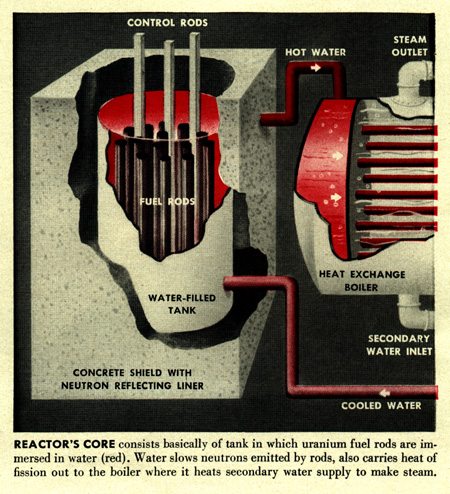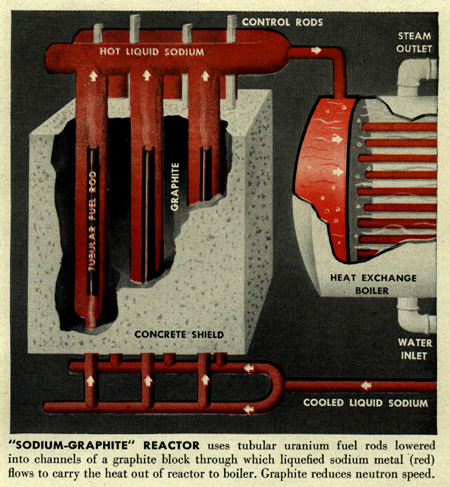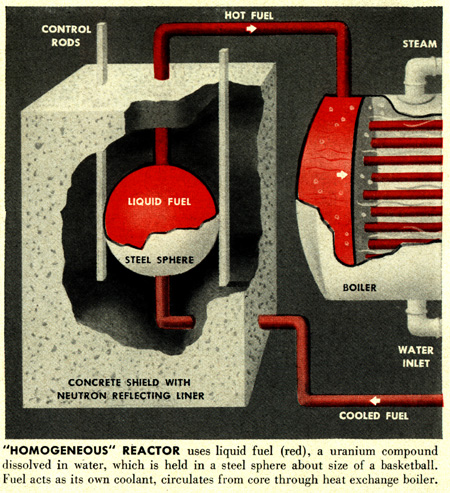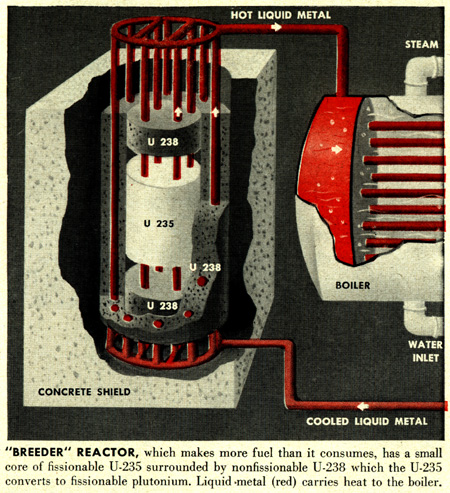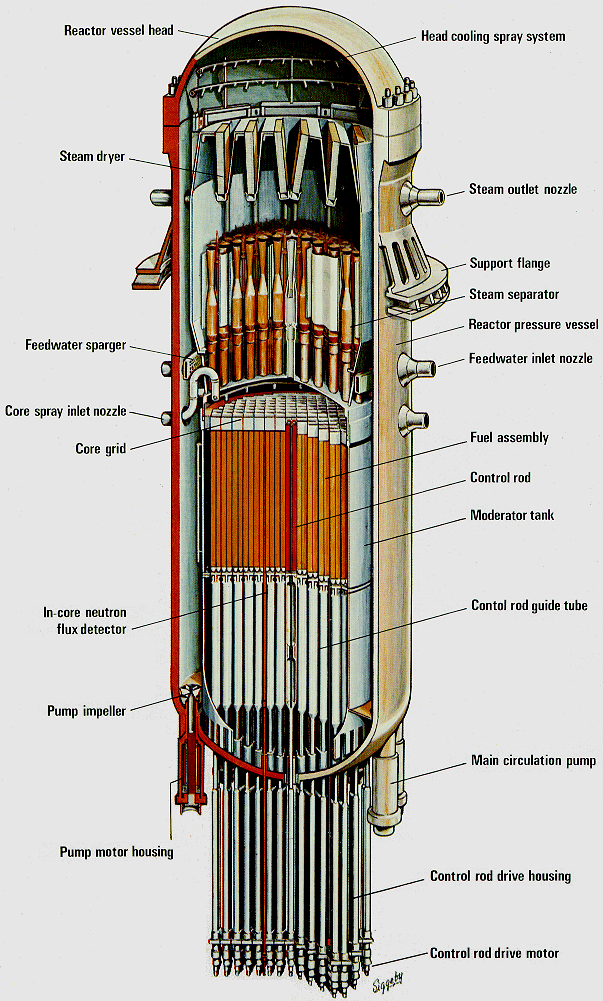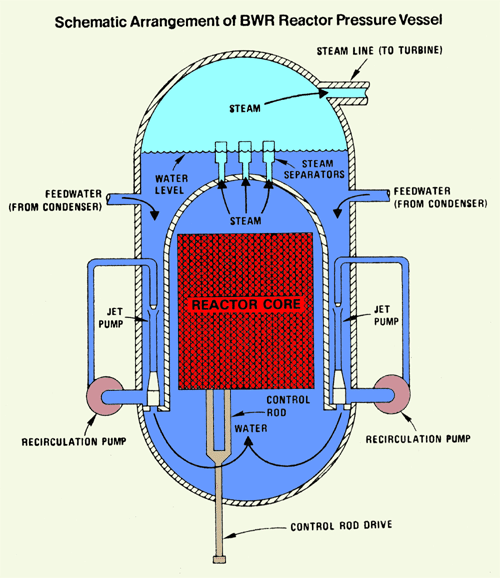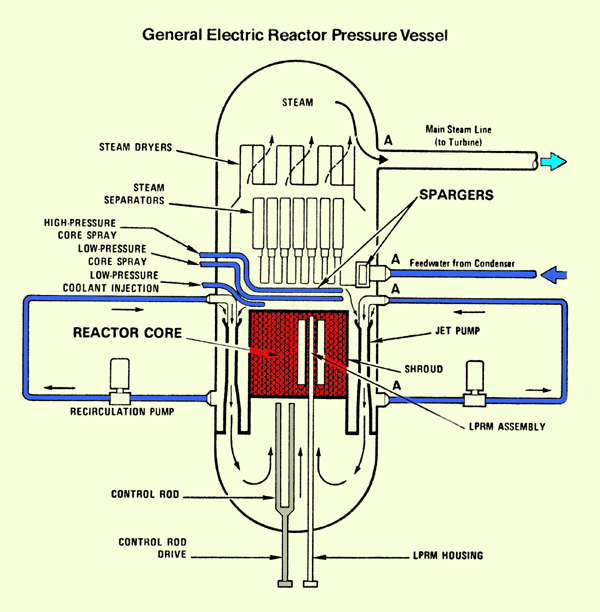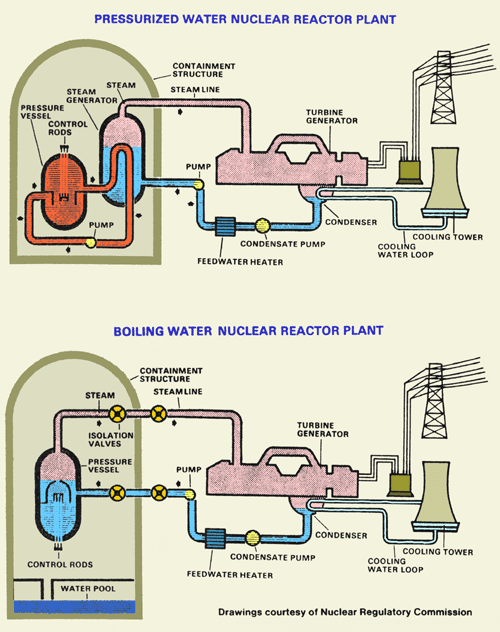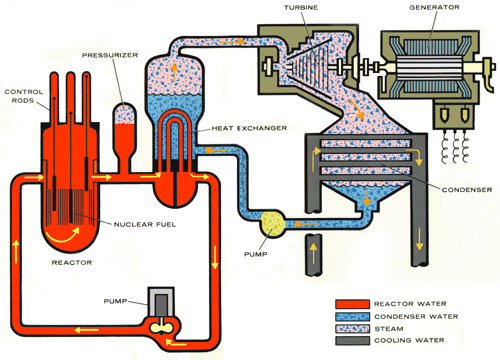Working of nuclear plant resembles that of fossil fuel plants but differ in the on going process as the nuclear energy is generated in a nuclear reactor as a result of chain reaction. Rods of Uranium are dipped in the reactor and energy is produced by the process of nuclear fission. The neutrons are projected into the Uranium atoms, after striking with the nucleus the atom splits and generates large amount of energy. Water or some gas like carbon dioxide is pushed into the nuclear reactor which on heating used to generate electricity by running turbines. The turbines and generators of nuclear power plant are similar to conventional power stations. To control the nuclear chain reaction rods of boron are used to absorb neutrons. These boron rods are also used to slow down the chain reaction. The rods are dipped deep into the nuclear reactor to absorb neutrons which slows down the nuclear reaction. To raise the speed of nuclear reaction the boron rods are pulled out.
The power stations in Britain are planed near coasts. The location exempts the need of cooling tower as sea water can be used to convert steam into water. This water can be pumped into the reactor once again.
In a Magnox or AGR nuclear reactor, carbon dioxide is used to transport heat due to its qualities of being a good coolant and carry large amount of heat. The use of carbon dioxide also decreases the risks of fire because in high temperatures like 600 degrees Celsius the gas does not create trouble.
The construction of the nuclear reactor is very important because the flaws of structure can result into massive tragedies. Material must be selected by keeping in mind the internal temperature of the nuclear reactor and the compatibility of fuel because improper material can badly affect the environment. After the nuclear reactor is build up and starts to function there is no way to amend a mistake.
People are usually afraid of nuclear power plants but there is nothing to worry about because the reactors are not dangerous and explosive like atom bombs. Boron rods can control the increasing temperature of the nuclear rector if the rods do not serve the purpose than emergency control rods are used. These rods drop down in the reactor and shut the system automatically.
Note: This image explaining how nuclear fussion takes place to produce electricity.

- Nuclear power does not cost more than the coal. So it is very easy and affordable to generate nuclear energy.
- The reaction does not produce pollutants or hazardous smoke of green house gases like carbon dioxide.
- The reactor is able of generating huge amount of energy by using negligible amount of fuel.
- The waste of nuclear reactor is negligible.
- It is one of the most reliable sources of energy.
- Nuclear power is reliable.
There are also disadvantages of nuclear energy some of them are given below:
- Although the waste is very small but it is more dangerous than the by products of many other fossil fuels. The residue needs to be buried deep down in earth for thousands of year so the radioactivity can diminish. It should also be kept safe from earth quake, floods and terrorist attack.
- The source of energy is although reliable but to maintain the safety of the plant is very expensive. In case of any accident, the nuclear power station can result into a disaster.










































